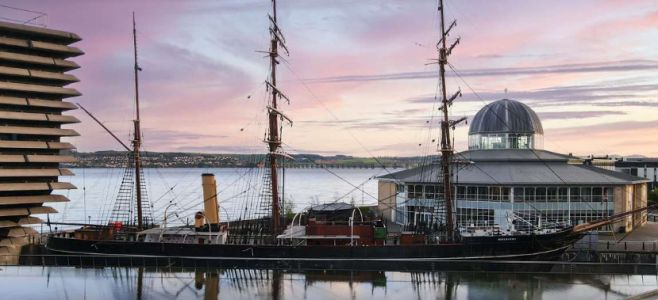 RRS Discovery is a barque-rigged auxiliary steamship built for Antarctic research. She was the last traditional wooden three-masted ship to be built in the United Kingdom. Her first mission was the British National Antarctic Expedition, carrying Robert Falcon Scott and Ernest Shackleton on their first, and highly successful, journey to the Antarctic, known as the Discovery Expedition.
RRS Discovery is a barque-rigged auxiliary steamship built for Antarctic research. She was the last traditional wooden three-masted ship to be built in the United Kingdom. Her first mission was the British National Antarctic Expedition, carrying Robert Falcon Scott and Ernest Shackleton on their first, and highly successful, journey to the Antarctic, known as the Discovery Expedition.
The aptly named Discovery is now a museum ship in Dundee, Scotland, the port where she was built in 1901. After a storied and arduous career spanning 123 years, it is remarkable that the ship has survived.
Now, the historic ship has a brand new “digital twin.” Using state-of-the-art technology, a team led by researchers at the University of Southampton has created a highly accurate 3D representation of RRS Discovery. The new “digital twin” provides new insights into how the ship was built and used while also informing ongoing restoration work on the original vessel.
“This digital twin provides an amazing opportunity for more people to explore this fascinating ship and learn about its history in a completely new way – including areas of the ship that cannot be accessed by the public,” Dr Michael Grant, from Coastal and Offshore Archaeological Research Services at the University of Southampton, explained in a statement.
“Through this we can obtain even greater insights into the lives of the people who explored the Antarctic over a century ago, providing the foundation for much of the ocean and climate science being undertaken today.”
IFLScience reports that the team created the representation by making digital recordings of the vessel using unmanned aerial vehicles (UAVs) and laser scanners. The latter enabled the team to capture the ship’s precise shape, dimensions, and details. This was supplemented with LiDAR – a technique for remote sensing that uses light in the form of a pulsed laser – and photogrammetry surveys, which created the highly accurate 3D representation of the whole ship, including its interior and exterior.
The Dundee Heritage Trust notes that next year marks the centenary of the Discovery Oceanographic Expedition in Antarctic waters, between 1925-1927, where further important scientific breakthroughs were made, including a greater understanding of whaling, the ecosystems of the great whales and the beginnings of conservation thinking.
The digital twin of the original RRS Discovery will play an important role in the 2025 centenary celebrations, providing new and exciting opportunities for engagement, education, and accessibility to this important ship.
